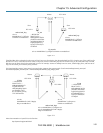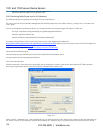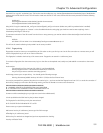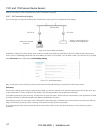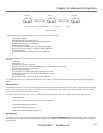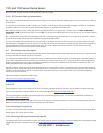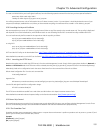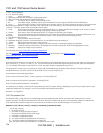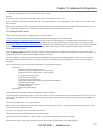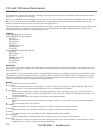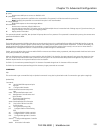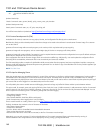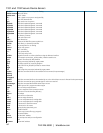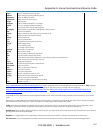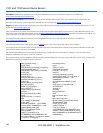
1101 and 1102 Secure Device Servers
724-746-5500 | blackbox.com
158
The console server includes the ipmitool utility for managing and configuring devices that support the Intelligent Platform Management Interface
(IPMI) version 1.5 and version 2.0 specifications.
IPMI is an open standard for monitoring, logging, recovery, inventory, and control of hardware that is implemented independent of the main CPU,
BIOS, and OS. The service processor (or Baseboard Management Controller, BMC) is the brain behind platform management and its primary
purpose is to handle the autonomous sensor monitoring and event logging features.
The ipmitool program provides a simple command-line interface to this BMC. It features the ability to read the sensor data repository (SDR) and print
sensor values, display the contents of the System Event Log (SEL), print Field Replaceable Unit (FRU) inventory information, read and set LAN
configuration parameters, and perform remote chassis power control.
SYNOPSIS
ipmitool [-c|-h|-v|-V] -I open <command>
ipmitool [-c|-h|-v|-V] -I lan -H <hostname>
[-p <port>]
[-U <username>]
[-A <authtype>]
[-L <privlvl>]
[-a|-E|-P|-f <password>]
[-o <
oemtype>]
<command>
ipmitool [-c|-h|-v|-V] -I lanplus -H <hostname>
[-p <port>]
[-U <username>]
[-L <privlvl>]
[-a|-E|-P|-f <password>]
[-o <oemtype>]
[-C <ciphersuite>]
<command>
DESCRIPTION
This program lets you manage Intelligent Platform Management Interface (IPMI) functions of either the local system, via a kernel device driver, or a
remote system, using IPMI V1.5 and IPMI v2.0. These functions include printing FRU information, LAN configuration, sensor readings, and remote
chassis power control.
IPMI management of a local system interface requires a compatible IPMI kernel driver to be installed and configured. On Linux, this driver is called
OpenIPMI and it is included in standard distributions. On Solaris, this driver is called BMC and is included in Solaris 10. Management of a remote
station requires the IPMI-over-LAN interface to be enabled and configured. Depending on the particular requirements of each system, it may be
possible to enable the LAN interface using ipmitool over the system interface.
OPTIONS
-a
Prompt for the remote server password.
-A <authtype>
Specify an authentication type to use during IPMIv1.5 lan session activation. Supported types are NONE, PASSWORD, MD5, or OEM.
-c Present output in CSV (comma separated variable) format. This is not available with all commands.
-C <ciphersuite>
The remote server authentication, integrity, and encryption algorithms to use for IPMIv2 lanplus connections. See table 22-19 in the
IPMIv2 specification. The default is 3 which specifies RAKP-HMAC-SHA1 authentication, HMAC-SHA1-96 integrity, and AES-CBC-128
encryption algorightms.
-E The remote server password is specified by the environment variable IPMI_PASSWORD.
-f <password_file>
Specifies a file containing the remote server password. If this option is absent, or if password_file is empty, the password will default to
NULL.
-h Get basic usage help from the command line.
-H <address>
Remote server address, can be IP address or hostname. This option is required for lan and lanplus interfaces.
-I <interface>
Selects IPMI interface to use. Supported interfaces that are compiled in are visible in the usage help output.
-L <privlvl>
Force session privilege level. Can be CALLBACK, USER, OPERATOR, ADMIN. Default is ADMIN.
-m <local_address>
Set the local IPMB address. The default is 0x20 and there should be no need to change it for normal operation.
-o <oemtype>
Select OEM type to support. This usually involves minor hacks in place in the code to work around quirks in various BMCs from various
manufacturers. Use -o list to see a list of current supported OEM types.



